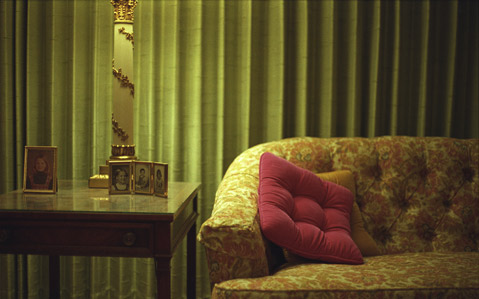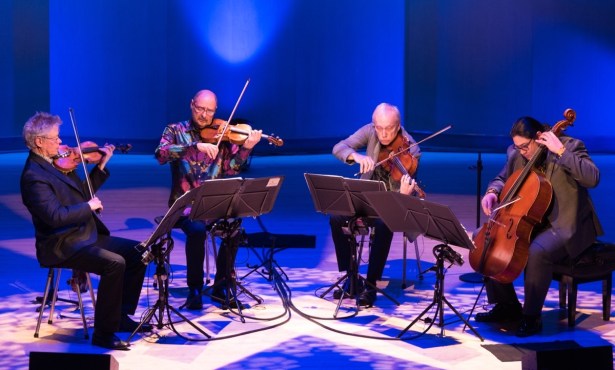Review: Bootsy Holler: Nuclear Family
Family Photographs in the Funk Zone at wall space gallery

It’s always exciting to encounter an artist living in passionate and intuitive connection with both their chosen medium and their subject. For Bootsy Holler, who makes all her photographs as though her life depended on it, her family comes across as an ideal subject. Add in the fact that Holler grew up in Hanford, Washington, the site of the world’s first major facility for the production of fissionable plutonium, and things quickly get wonderfully weird. Both Holler’s grandfathers and her father were employed as physicists by the Manhattan Project at a facility with thousands of other employees. Until the explosion of the nuclear bombs over Hiroshima and Nagasaki, the vast majority of the people living in Hanford had no real idea of what they were working on, and even decades after, they still weren’t talking about it.
For Holler, the open secret of her family’s nuclear past has set off the artistic equivalent of an atomic reaction. Although the content and style of the images in Nuclear Family vary widely across the three sections of a trilogy, all the images resonate with Holler’s intense personal yearning for resolution. The cumulative impact is an absorbing and bittersweet sense of inexpressible dread. In chapter one, “Ruby and Willie,” Holler prowls through her grandparents’ home in Richland, Washington, her camera loaded with color film and her viewfinder trained on the objects that reveal her grandfather’s obsessive relation with the past. When Willie’s wife, Ruby, passed away in 1978, he retreated to a single room in the basement, carefully preserving the rest of the house as if it were a museum for the next 30 years. Each image reveals the heartbreaking sincerity of this gesture of resignation through an emphasis on the fragmentary and the everyday. The tone and palette is like vintage Eggleston, but the feeling — and the meaning that drives it — is totally new.

Chapter two, “Visitor,” will likely get the most attention of the three parts, and that’s fine, because it is among the most virtuosic sets of photographic self-portraits to appear since Cindy Sherman’s movie stills of the early 1980s. With a painstaking approach, Holler has recalibrated and recast a dozen or more black-and-white snapshots taken by and of her parents. The recasting involves first costuming, then photographing, and then finally inserting her own image as an adult woman in among the figures of not only her mother and her father, but of her younger self and her siblings, as well. Handwritten annotations assist the viewer in picking up on this very subtle and deeply felt intrusion that Holler has staged a Photoshopped home invasion of her own childhood. I have a feeling we will be looking at these heavy, dramatic, atmospheric images of an alternate past frequently, and for a long time.
The final chapter, “Hanford Declassified,” is as straightforward as this hyper-personal project gets. The images are landscape photos of what was referred to as “the area,” the now-barren territory in which Holler’s father served as manager of Nuclear Operations for the United States Department of Energy. The big open skies are beautiful, as are the presumably toxic prairies and rivers below. As the federal government pours money into Hanford’s giant Superfund site, Holler records with her camera the desolation that this secret project has become and thus comes to terms with the massive denial that created and maintained the entire community in which she grew up. It’s no wonder that she can insert herself so readily within those old snapshots; in a way, this is the first time she’s been completely present there.



